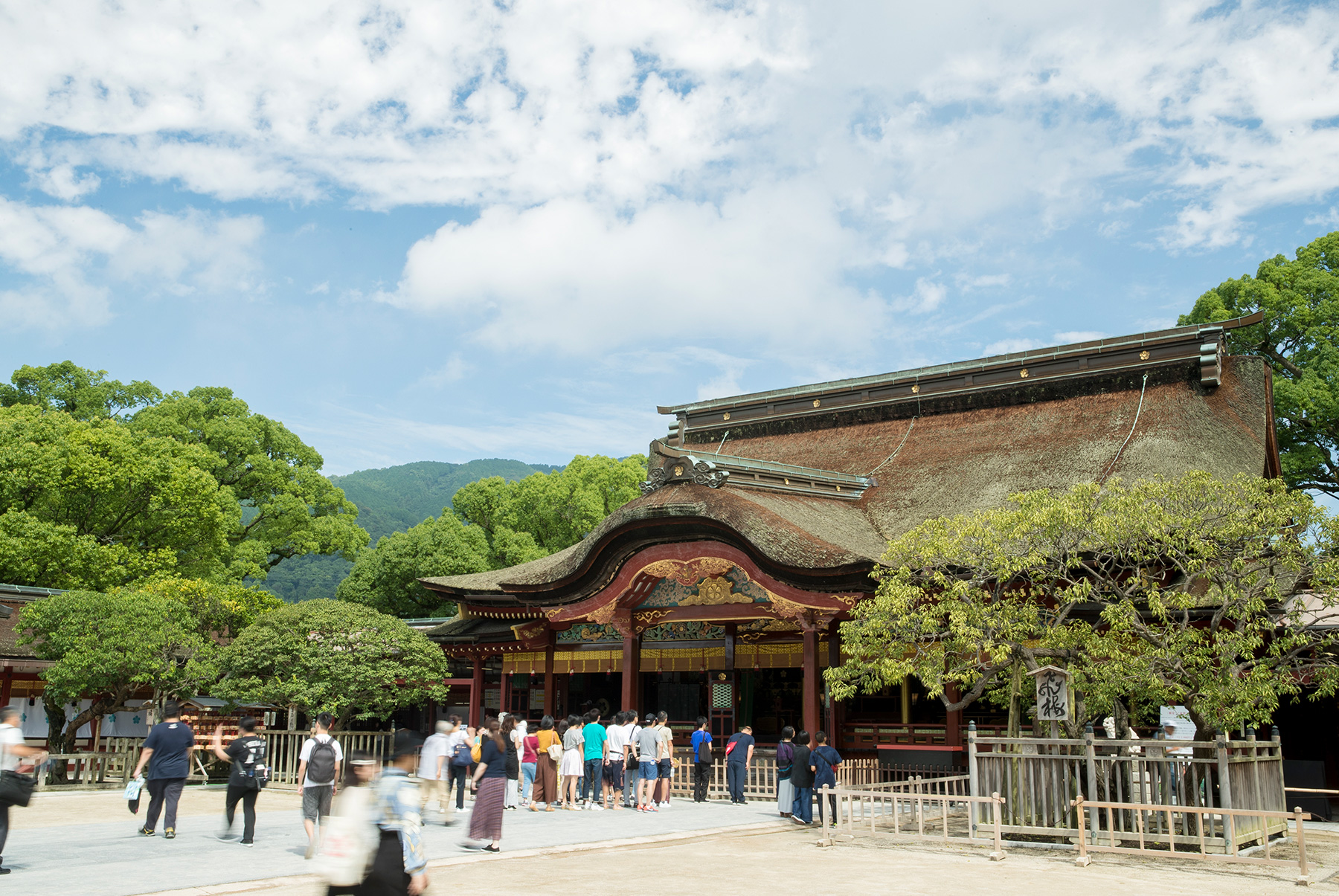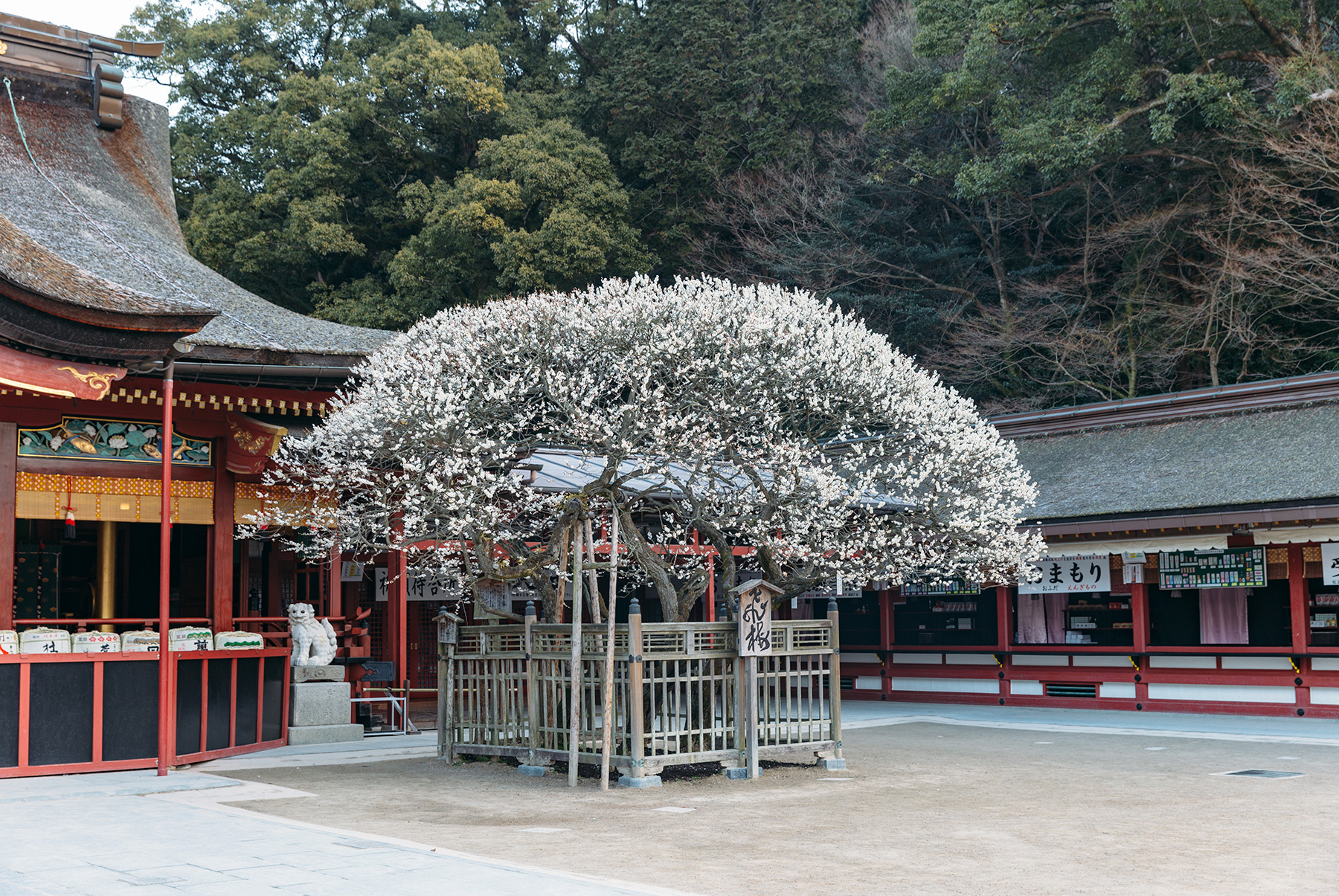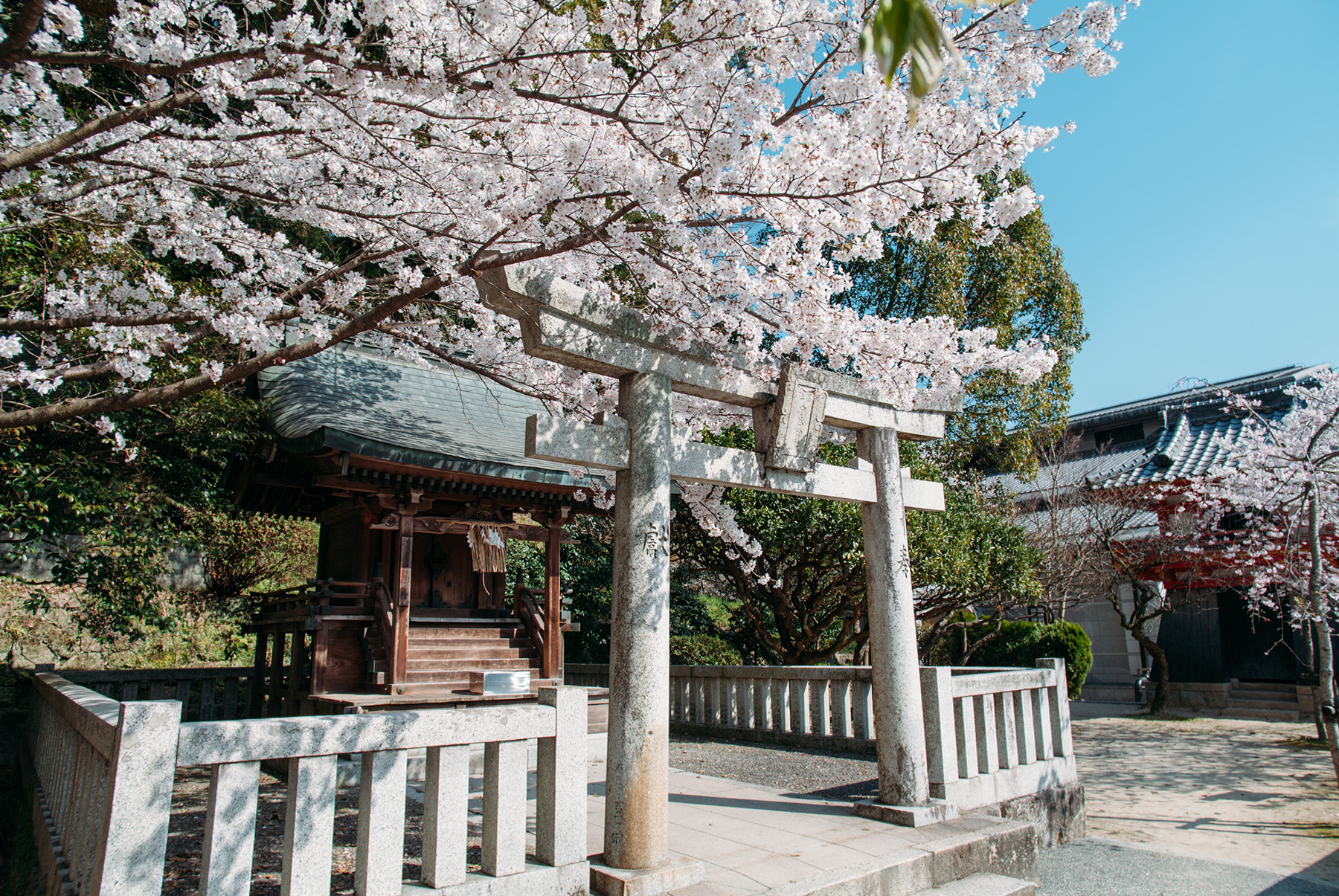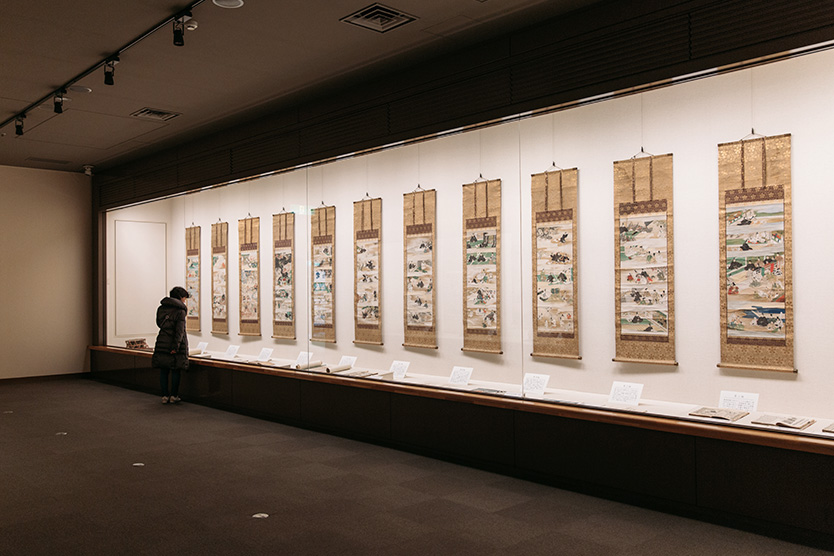DiscoverExplore the Grounds
What to See at the Shrine


The grounds of Dazaifu Tenmangu are extensive, dotted with thousands of plum trees and a hundred huge camphor trees, creating an urban oasis perfect for strolling. Besides the impressive honden, or main sanctuary, there are museums, smaller shrines, statues, contemporary artworks, and teashops selling the famous local umegaemochi sweets.




Torii

Walking from the station along the stone-paved approach to Dazaifu Tenmangu, you pass under two large gates before reaching the main torii serving as the entrance to the shrine grounds. A fourth 700-year-old gate stands on the path before the arched taiko-bashi bridges, and a final torii gate marks the entrance into the inner sanctuary where the honden is located. Torii gates mark sacred ground and are a common feature of shrines in Japan. The old, stone torii gates of Dazaifu Tenmangu lend a special atmosphere to the street leading up from the station, particularly at dusk when they are silhouetted against the colorful sunset.

Shingyu
Oxen have a special significance at Dazaifu Tenmangu. According to legend, after Sugawara Michizane passed away, the ox pulling the carriage bearing his remains suddenly lay down in the road and refused to budge. Sugawara’s followers buried him at that spot, over which the honden now stands. Since Sugawara's death and deification, numerous people have donated ox statues, or shingyu, as offerings. Today, there are 11 of these statues around the shrine. The largest, cast in bronze, is just beyond the torii gate that marks the entrance to the shrine grounds. Some visitors pat its head in the hope of becoming wiser, which is why that spot is so shiny.


Taiko-bashi

The Shinji-ike pond and its three vermillion bridges, representing past, present, and future, are just inside the entrance to the shrine grounds. Two of the bridges are arched taiko-bashi bridges, which offer great views back to the entrance and forward to the two-story romon gate that leads to the main sanctuary. The middle bridge, representing the present, is flat and you cannot see what is ahead. Water symbolizes purity and purification in Shinto, and you cross the water into the sacred realm. The bridges are a popular photo spot, with the dynamic, arched shapes of the bridges reflecting in the water and the bright red of the bridge’s railing contrasting with the greenery.

Kirin
The kirin is a mythical creature originating in Chinese folklore with the head of a dragon and the body of either a horse or deer. They represent longevity, magnificence, wisdom and celebration, and the statue at Dazaifu Tenmangu celebrates Sugawara Michizane’s character, held in such esteem, and his contributions to Japanese culture and society. The statue was donated in the mid-1800s but appears more modern due to its glossy patina—the result of being rubbed and patted by many hands. Feel free to take a picture with this rarest of creatures before cleansing your hands at the temizuya or visiting the Dazaifu Tenmangu Museum.



Honden

The honden is the spiritual heart of the Dazaifu Tenmangu shrine complex and enshrines the deity Tenjin. It marks the final resting place of Sugawara Michizane (845–903)—the scholarly and virtuous man worshipped as Tenjin. The honden itself is an architecturally impressive structure with dramatically sloping eaves, decorated in rich colors and with delicate carvings. It captures the opulent and dynamic style of the Azuchi-Momoyama period (1574–1600), a period of dramatic change and one of the great flowerings of culture, as the country was reunited after a century of civil war. The current structure, built in 1591, is an Important Cultural Property of Japan and replaced the tenth-century honden.

The honden is the main sanctuary and center of shrine activity. Here, visitors may observe morning prayers, Shinto rituals and the daily comings and goings of priests clad in their colorful formal robes.

Komainu
Komainu, often called lion-dogs, are statues of mythical creatures which guard shrines from evil. They always come in pairs: one male to the right, with an open mouth, and one female to the left with a closed mouth. The four pairs of komainu which line the path to the honden at Dazaifu Tenmangu include a pair of especially striking komainu with white marble bodies and piercing black eyes, guarding the honden.

Tobiume
The tobiume or "flying plum," standing to the right of the honden, is the most famous of Dazaifu Tenmangu’s 6,000 plum trees. Sugawara loved plum trees from childhood, and before he left Kyoto for exile in Dazaifu, he wrote a tribute to his favorite plum tree in a poem, including the lines, "Never forget the spring" and "Even though your master is no longer here." According to legend, the plum tree could not bear to be separated from him, so it uprooted itself from the garden and flew to Dazaifu to be with Sugawara.

Nakashima Shrine
Nakashima Shrine is one of several miniature shrines located in a secluded, particularly picturesque section of the grounds beside the honden. Visit for a closer look at these beautifully crafted auxiliary shrines and to spend a moment in the shaded grounds with their cherry trees, maples, pond, and small waterfall. There are relatively few people that visit this area making it a great place for a short breather and change of pace from the honden, or main sanctuary. If your visit coincides with cherry blossom season, stop by for a picture-perfect view of Nakashima Shrine framed beautifully in pink.


Dazaifu Tenmangu Museum

The Dazaifu Tenmangu Museum houses around 50,000 treasured historic items and artworks, offering insights into the shrine's rich history and the life of Sugawara Michizane. The exhibition rooms feature well-designed displays of cultural artifacts, including Sugawara's original poems, his sword, and a partial transcription of an important Chinese historical document—a designated National Treasure. After touring the exhibits, you can visit the museum store, which has a good selection of stationery, small gifts, and books. You can buy an individual ticket to enter the museum, or a combined ticket which will give you access to the Kanko Historical Museum and the Kyushu National Museum as well.


Tenkai Inari Shrine

Tenkai Inari is a small shrine in a quiet section of the grounds of Dazaifu Tenmangu. It stands on a modest hillside and enshrines a deity associated with commercial success and good fortune. The short walk to the shrine is along a winding path and up steep stone steps through forested grounds. Banners flank the path and bright red torii gates stand in close succession. The method of offering prayer at Tenkai Inari differs from that of other shrines in that visitors ring one of 12 bells representing the Chinese zodiac before ringing the main prayer bell. Venture beyond the main shrine building to discover the inner sanctuary shrine within a small cave-like enclosure.


